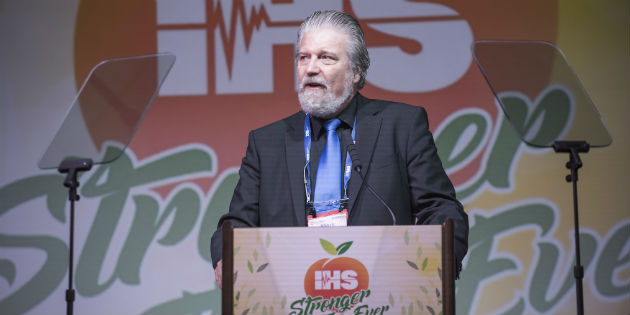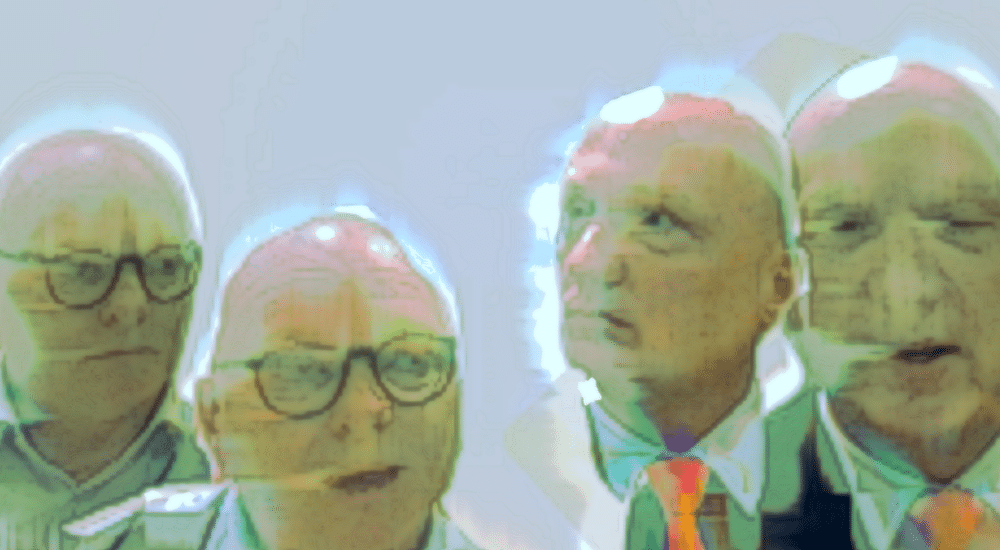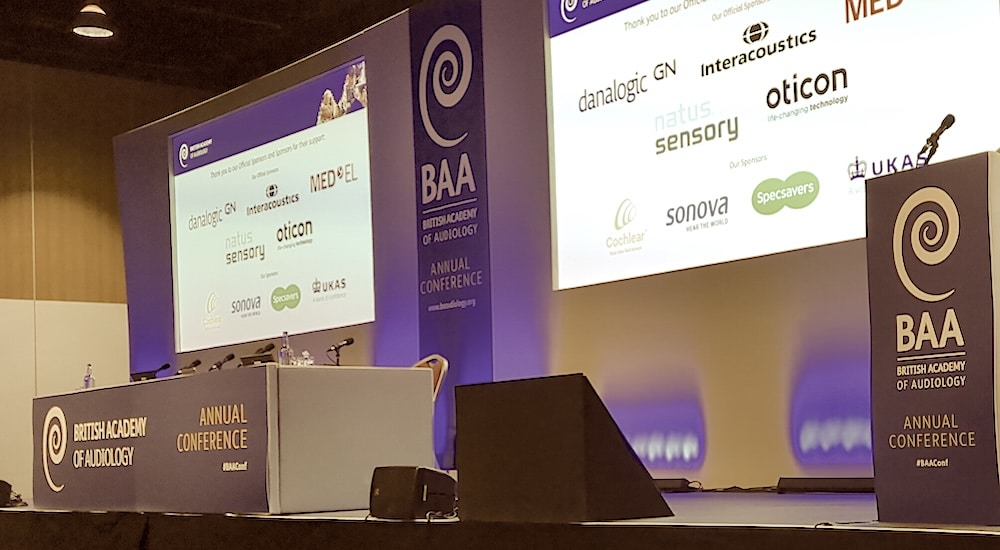An update on OTC legislation
euha2017
On Friday, August 18, the over the counter (OTC) debate, that has been raging since March in the USA, came to its first conclusion with president Donald Trump signing the 2017 Food and Drug Administration Reauthorization act.

This legislation includes the over the counter hearing aid act designed to provide greater accessibility and affordability with OTC hearing aids.
This new legislation that will make it possible to sell hearing aids without a prescription was passed by the United States Senate on Thursday August 3, 2017. According to the AARP (American Association of Retired Persons), a nonprofit advocacy group, the new rules could reduce the cost of hearing aids for consumers by thousands of dollars and open up the possibility of hearing rehabilitation to people who are not currently able to afford prescription devices. These conventional devices, sold in the context of a hearing assessment by a physician and fitted by hearing aid specialists, are not covered by Medicare (federal health insurance for people who are 65 and over) or private health insurance. The bill requires the US Food and Drug Administration (FDA) to create a new category for OTC hearing aids, and to set regulations governing the devices. The regulations must provide “reasonable” assurances of safety and efficacy, and establish output limits and labelling requirements. Importantly, they must also describe requirements for the sale of hearing aids in person at pharmacies and stores, by mail, or online, without a prescription.
This is just the start of a process that could ultimately take three years – the time limit specified by the legislation − for the establishment of an OTC category of hearing aids for adults. And so, the debate carries on with consumer protection, safety and labelling becoming concerns. Organisations such as the Consumer Technology Association (CTA) and the Hearing Industry Association (HIA) are at different ends of the spectrum, with the CTA wanting a voluntary compliance to a performance standard, whilst the HIA want higher levels of safety and consumer protection.
Implications for European markets?
Meanwhile, Europe watches and considers the ramifications of this development in America. These trends have not been met with unanimous applause and they are starting to worry some organizations in Europe. Martin Blecker, President of the European Union of Hearing Aid Acousticians, says, “Only when looked at in passing, over-the-counter hearing aids may seem to offer benefits for people with hearing loss. Hearing is just as individual as a fingerprint. This is why the hearing aid acoustician will fit hearing systems according to individual requirements. Setting the hearing system is not a single action but a process that needs professional expertise. After the first fit, perception will change, and will continually be adapted step by step to suit the hard of hearing person’s requirements. “This is not the case with OTC hearing aids. In the long run, users will be disappointed by over-the-counter hearing aids, and will be reluctant to wear them. This may damage the public’s perception of hearing systems. Moreover, I can’t see why people with mild to moderate hearing loss, who are the main target group for OTCs, should receive inferior hearing aid services than those with severe hearing impairment. Hearing is one of our most important senses, and should be managed in a professional way from an early stage to prevent hearing deficiencies from progressing. Where does consumer protection come in with OTCs? In my view, this leaves more issues unresolved than it answers. In the future, we as hearing aid acousticians will continue to hold our ground in the market by taking part in further education and advanced vocational training, and by offering high-quality service.”
End of May, the European Association of Hearing Aid Professionals (AEA) organised a mini-symposium on these issues, inviting the European Hearing Instrument Manufacturers Association (EHIMA) and the European Federation of Hard of Hearing People (EFHOH) to the event. The aim was to review the situation concerning OTC and PSAPs (Personal Sound Amplifier Products) based on available studies.
Changing numbers and potentially hazardous products
The United States is trying to find new models so that more hard of hearing people are fitted with hearing aids. The problem is that the numbers put forward to justify these models are incorrect, said Mark Laureyns, President of the AEA. “When you read the justifications for why new initiatives are needed in the United States to improve access to hearing aids, one of the commonly cited problems is that only 15% of adults with hearing loss have hearing aids. But this really depends on the definition of ‘hearing loss’, on the way use of hearing aids is evaluated, and on how recent the information is. This figure of 15% is based on data that are 10 years old and that no longer reflect today’s reality.” Instead, Mark Laureyns puts forward the figures reported by the MarkeTrak study carried out in 2015 and that evaluated the number of people reporting hearing loss, and extrapolates this figure based on the European context and reaches a very different – and far less worrying – number for the proportion of people diagnosed with hearing loss who have hearing aids: 60%. In Europe, this figure is 58% according to EuroTrak. Another hotly debated topic: assistive hearing devices.
“At the request of the European Federation of Hard of Hearing People (EFHOH), the Technology and Audiology Working Group of the AEA analysed 27 of these personal amplifiers sold in Europe in 2015. All of them exceeded the maximum volume level of 120 dB SPL, 89% exceeded 125 dB SPL, and 30% 130 dB SPL. These shocking results were presented to the European Parliament, the World Health Organisation, the International Telecommunication Union (ITU) and during a public workshop to the US Food and Drug Administration (FDA). Even the Consumer Technology Association (CTA) took these fi ndings very seriously, and at the same FDA workshop, Mead Killion from the CTA presented a proposal for a standard on personal amplifiers using the joint AEA/ EFHOH report as a reference,” Laureyns added. In short, the AEA and the EFHOH have said that the conditions of use of personal amplifiers should be modelled on those for music headphones, in other words limited to 40 hours per week at 80 dB(A), and to 5 hours per week at 84 dB(A). Now that assistive hearing devices are on sale, it would be better if they did not put the user’s hearing health at risk.
Speaking with a single voice…
According to the AEA, the reason the US is facing these problems at this time is because “professional organisations there are divided and do not agree on the way to manage the unrestricted sale of assistive hearing devices, which means that audiology professionals in the US cannot speak with a single voice.” For instance, the American Academy of Audiology (AAA), the American Speech-Language-Hearing Association (ASHA) and the Academy of Doctors of Audiology (ADA) are in favour, while the International Hearing Society (IHS) is opposed. Consumer groups and associations for the hearing impaired are for the change and the manufacturer’s Hearing Industries Association (HIA) is in favour provided that these hearing aids are only authorised for mild hearing loss, and not for mild-to-moderate hearing loss. “
Fortunately in Europe, professional, patient and manufacturer associations work together in a very constructive way and join forces when it comes to organising hearing healthcare on the continent,” say the EHIMA, AEA and EFHOH. “This shouldn’t be overlooked. European organisations for the hard of hearing, which make up the EFHOH, were the driving force behind ensuring that hearing healthcare was taken seriously by decision-makers, making care affordable as part of universal healthcare systems.”
Stefan Zimmer, the new Secretary General of EHIMA said, “EHIMA’s stand is that hearing instruments are medical devices and need to be fitted by well trained and well-educated professionals. European and national legislation in various European countries reflect this demand. European stakeholder organisations of the hearing aid industry (EHIMA), care providers (AEA) and of people hard of hearing (EFHOH) all agree that high service quality of professional fitters is essential for success.”
However, in the UK…
President of the British Academy of Audiology, Michelle Booth, sees things from a slightly different angle due to the nature of UK audiology provision “The UK market is very different to the United States as we have the option of accessing high specification hearing instruments from the NHS free at the point of delivery. So driving down price is not the only barrier to accessing help for hearing that the UK population faces. We know that the uptake of hearing aids both in the NHS and the private sector particularly for mild and moderate losses is low, and has remained static for a significant period of time. If the introduction of a wider choice of provision options, including a transactional audiology model like OTC devices improves the uptake of hearing devices and challenges the stigma surrounding hearing loss then this should be viewed as a good thing.
“However, BAA would be keen to see that any such devices are safe and effective with an appropriate evidence base for their use. As Audiology professionals, our role extends beyond the simple provision of a device to correct hearing deficits and centres much more around the individual’s journey of rehabilitation to hearing loss. The introduction to the market of OTCs should be viewed as an additional option for people rather than a replacement of current provision. BAA would be keen to ensure that the public are furnished with accessible information so that they are able to make fully informed choice.”
The view of the British Academy of Audiology is on a par with the National Community Hearing Association. Harjit Sandhu, Director Policy and Strategy for the NCHA said, “The two health systems are not directly comparable, something health economists and policymakers understand. The US is therefore trialing a policy of market reform and we continue to monitor this. That policy however has far fewer applications this side of the pond – for example, price is not the cause of the huge unmet hearing needs and the associated public health challenges in the UK.
“In the UK, we need to take a more sophisticated approach in order to tackle the root causes of unmet needs. Our goals at the NCHA therefore remain unchanged by new laws in the US. Our local solutions will be unique and tailored to our own dynamic health systems. We do need to transform UK hearing, but for very different reasons and in very different ways from the US.”
Manufacturers could influence the outcome
David Welbourne, Chief Executive of the British Society of Hearing Aid Audiologists, questions whether OTC sales will provide a sufficiently attractive solution to overcome the stigma and make a difference to the large numbers who currently are untreated and often undiagnosed. He believes a public health campaign would be needed along with legislation to change the market dynamic. He also questioned the potential influence of a key stakeholder in this whole debate. “Potentially the biggest consequence for hearing care in the UK, it will depend on the way the specialist manufacturers accelerate the introduction of new products that can be fitted and programmed with less dependence on the skill of the professional. Such products supported by on-line sales and remote assessment tools will change the nature of the market, irrespective of regulation. The growing number of consumer electronics companies, and further alignment between wearables, smart devices and fitness/wellbeing monitors will have a similar impact on the variety, availability and price of products. Audiologists should be preparing for the inevitable, and ensure that they sharpen their focus on the most important part of their role – that trusted, personal relationship with their clients, that will continue to make the biggest difference. Both technology and regulation are set to change the nature of hearing care, but they can only go part way and will never be able to completely replace that intangible contribution to the best outcome that is made by the dedicated professionals.”
Read the article in our Audiology Worldnews EUHA Congress special issue (free-access flipbook)
 Sign in
Sign in

